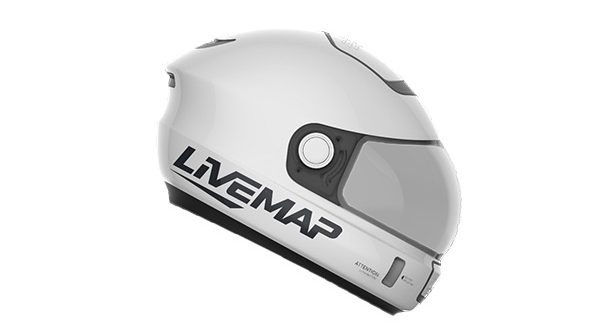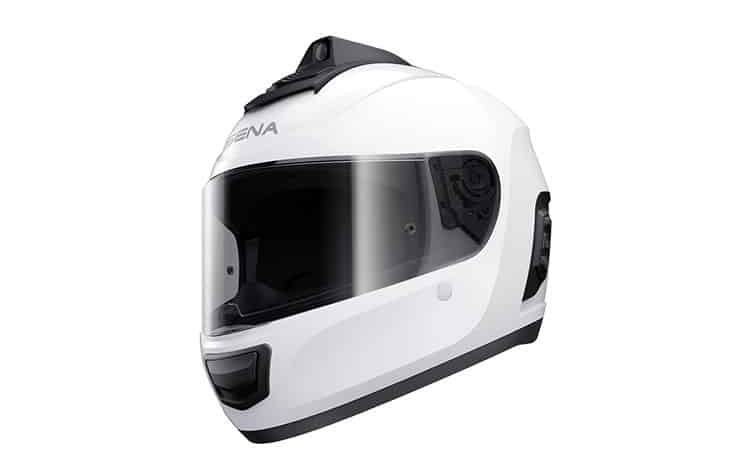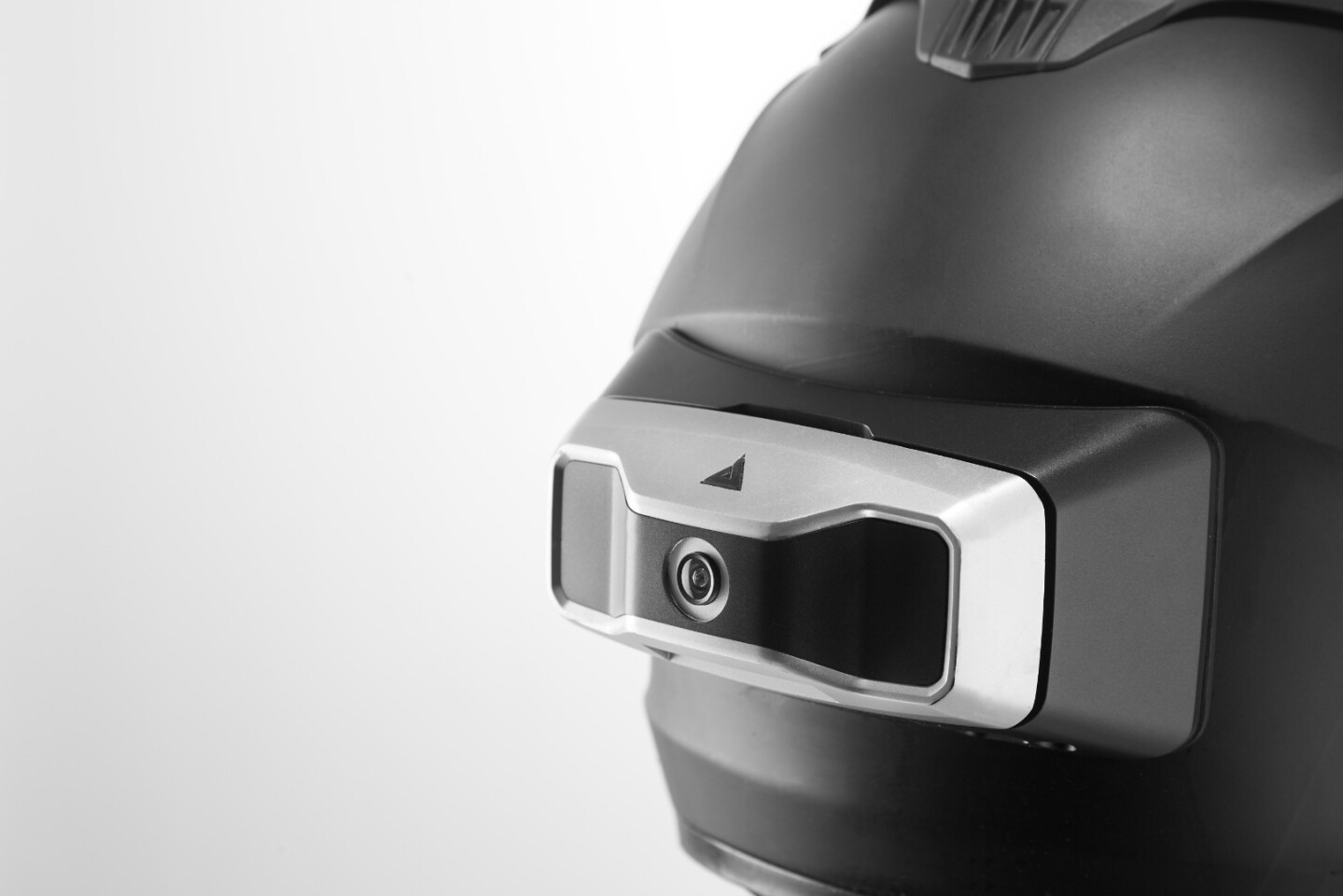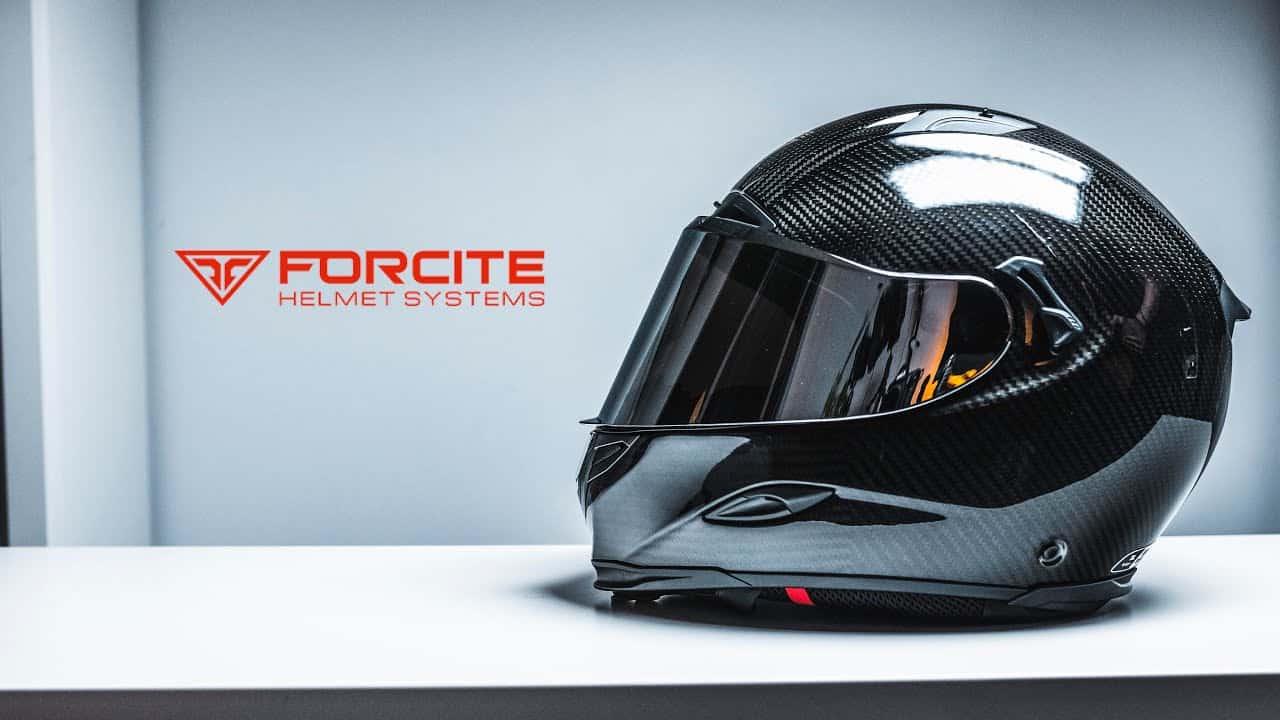Gone are the days when we had just analogue helmets. Fast forward to today, smart options now exist with Augmented Reality navigation, which grants you access to futuristic technology. In fact, these helmets also come with Bluetooth connectivity or Bluetooth Communication systems that will come in handy during bike rides. For the best options around right now, see our list of 5 best motorcycle smart helmets with AR navigation.
1. Livemap Helmet:

This smart helmet comes with an AR interface that will aid you to view a projected image rather than technical and complicated displays. With it, you will have access to routes and vital parameters while keeping your eyes on the road.
Must Read: 5 Best Commuter Bike Lights
Its unique AR technology offers you a projected color transparent image and it will solve motorcycle riding safety issues the same way as the HUD in a car by projecting the information at a safe focus distance directly on your visor. As at the time this article was written, the price of Livemap Helmet was around $2.000.
2. Sena Momentum INC Pro Bluetooth Helmet:

The Sena Momentum INC Pro Bluetooth Helmet comes with an inbuilt mounted high-definition video camera. It seamlessly record videos in 2K Quad HD quality and 1440p:30fps. It shoots with a wide angle of 125°.
Must Read: 5 Best Bicycle Gadgets To Keep You Safe and Secure
Further more, it allows looping video recording time of 2 hours. Footage recorded can be accessed on diverse devices, which there is no monopoly here. Other features include about 20 hour talk time, built-in speakers & mic, and voice-command-enabled. As at the time this article was written, the price of the Sena Momentum INC Pro Bluetooth Helmet was around $349.
3. Argon Transform Motorcycle Helmet Attachment:

If what you desire is an attachment rather than a complete overhaul, then you should totally consider the Argon transform motorcycle helmet. It offers an Augmented Reality dual camera (rear and front) HUD attachment. It packs in a navigation Head-up display, which delivers simplified audio and visual GPS navigation with a quality speedometer and speed limit.
It is also home to 170 degrees wide-angled rearview camera with 1080P HD quality. Futher more, it promises low latency live in video feed. As at the time this article was written, the price of Argon Transform Motorcycle Helmet Attachment was around $680.
4. Skully AR-1 Motorcycle Helmet:

still on the topic of best motorcycle smart helmets with AR navigation. The Skully AR-1 Motorcycle Helmet offers live rear view, turn-by-turn GPS, and smartphone integration. It is the first vertically integrated smart HUD helmet for consumers.
In addition to its top Heads Up Display system that displays information approximately 10 feet in front of the rider, the AR-1 helmet comes with a near 180-degree rearview camera, turn-by-turn GPS navigation, smartphone pairing, and voice control making it every rider’s dream. Skully is definitely one of the brands that keep working with AR while manufacturing its helmets. As at the time this article was written, the price of the Skully AR-1 Motorcycle Helmet was around $1,499.
5. Forcite Helmet:

The Forcite helmet offers GPS informed alerts translated into a unique in-helmet LED display to ensure road conditions are always clear and visible. Owners will be able to take calls, listen to music, talk to fellow riders, and receive audio alerts with Bluetooth/HiFi integrated speakers and Omni-directional dual microphones. It was manufactured to deliver both weight reduction and compactness, and it delivers massive value for money. As at the time this article was written, the price of the Forcite Helmet was around $900.
wrapping up:
Having read through this list of 5 best motorcycle smart helmets with AR navigation. If you have any personal favorites we haven’t mentioned above, kindly let us know in the comment section below. We would love to hear from you.
More Information On Motorcycle Helmets:
A motorcycle helmet is a type of helmet used by motorcycle riders. Motorcycle helmets contribute to motorcycle safety by protecting the rider’s head in the event of an impact. They reduce the risk of head injury by 69% and the risk of death by 42%. Their use is required by law in many countries.
Motorcycle helmets consist of a polystyrene foam inner shell that absorbs the shock of an impact and a protective plastic outer layer. Several variations exist, notably helmets that cover the chin area and helmets that do not. Some helmets provide additional conveniences, such as ventilation, face shields, sun visors, ear protection, or intercom.
The origins of the crash helmet date back to the Brooklands race track in early 1914 when a medical officer, Dr. Eric Gardner, noticed he was seeing a motorcyclist with head injuries about every 2 weeks. He got a Mr. Moss of Bethnal Green to make canvas and shellac helmets stiff enough to stand a heavy blow and smooth enough to glance off any projections it encountered.
He presented the design to the Auto-Cycle Union where it was initially condemned, but later converted to the idea and made them compulsory for the 1914 Isle of Man TT races, although there was resistance from riders. Gardner took 94 of these helmets with him to the Isle of Man, and one rider who hit a gate with a glancing blow was saved by the helmet. Dr. Gardner received a letter later from the Isle of Man medical officer stating that after the T.T. they normally had “several interesting concussion cases” but that in 1914 there were none.



